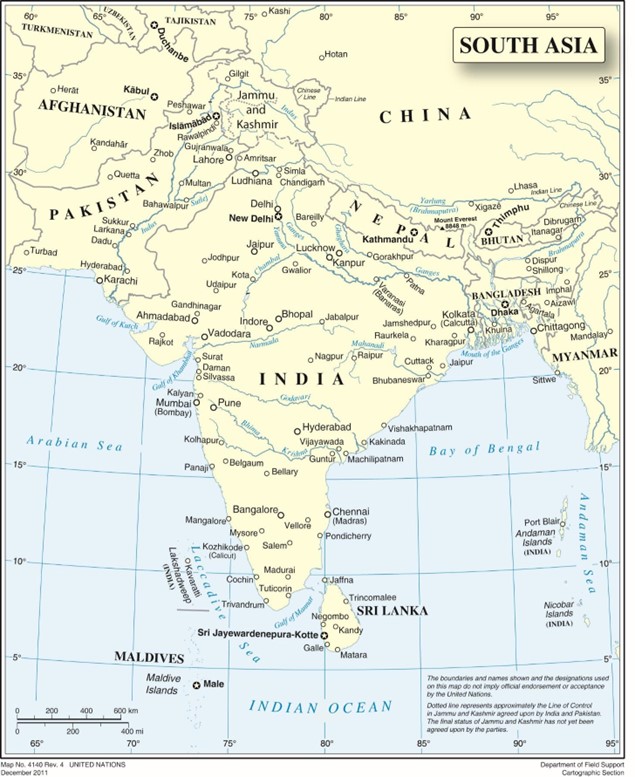Module 9: South Asia
Section outline
-

UN, Public domain, via Wikimedia Commons
The South Asian realm shaped by centuries of tremendous foreign influences unhindered by its formidable mountain ranges and vast deserts, is one of the most diverse parts of the world. It is the birthplace of two of the world’s great religions, the home of the largest cluster of human population, and is also the home of the world's greatest mountain ranges. The three largest countries of South Asian realm are India - the giant of the realm, Pakistan, and Bangladesh. The realm is highly diverse and populated. The diverse population has been brought together into political units that have roots in the realm’s colonial past. British colonialism had a significant impact on the realm. Many of the realm's contemporary political and cultural conflicts have roots in its colonial past.
Upon completion of this module, you will be able to:
- Describe the realm’s physical geography. Identify each country’s main features and physical attributes and locate the realm’s main river systems.
- Describe the dynamics of the monsoon and how it affects human activities, and agricultural patterns in the region.
- Describe how European colonialism impacted the Indian Subcontinent.
- Describe the basic demographic trends the realm is experiencing. Describe how population growth is a primary concern of India, Pakistan, and Bangladesh.
- Describe how cultural, religious, and linguistic difference continue to cause conflict and division in countries of South Asia.
- Describe the historical roots of Kashmir conflict between India and Pakistan and the importance of Kashmir for both countries.
- Describe some contemporary environmental and socio-economic concerns of India, Pakistan, and Bangladesh
- Describe how Pakistan and Bangladesh were once under the same government, and what factors contributed to the separation of East Pakistan leading to the formation of Bangladesh.
- Describe East-West, north-South geographic differences in India.
- Describe the basic structure of caste system in Hindu religion.
To achieve the objectives listed above:
- Read the Module 9 Introduction
- Read Chapter #9 - South Asia in World Regional Geography: People, Places, and Globalization.
- Complete the Module 9 Assignment, Discussion posts, Chapter Quiz, and H5P activities.
Module Pressbooks Resources and Activities
You will find the following resources and activities in this module at the Pressbooks website. Click on the links below to access or complete each item.
Chapter 9: South Asia – World Regional Geography (pressbooks.pub)
Background Colour
Font Face
Font Kerning
Font Size
Image Visibility
Letter Spacing
Line Height
Link Highlight
Text Colour
